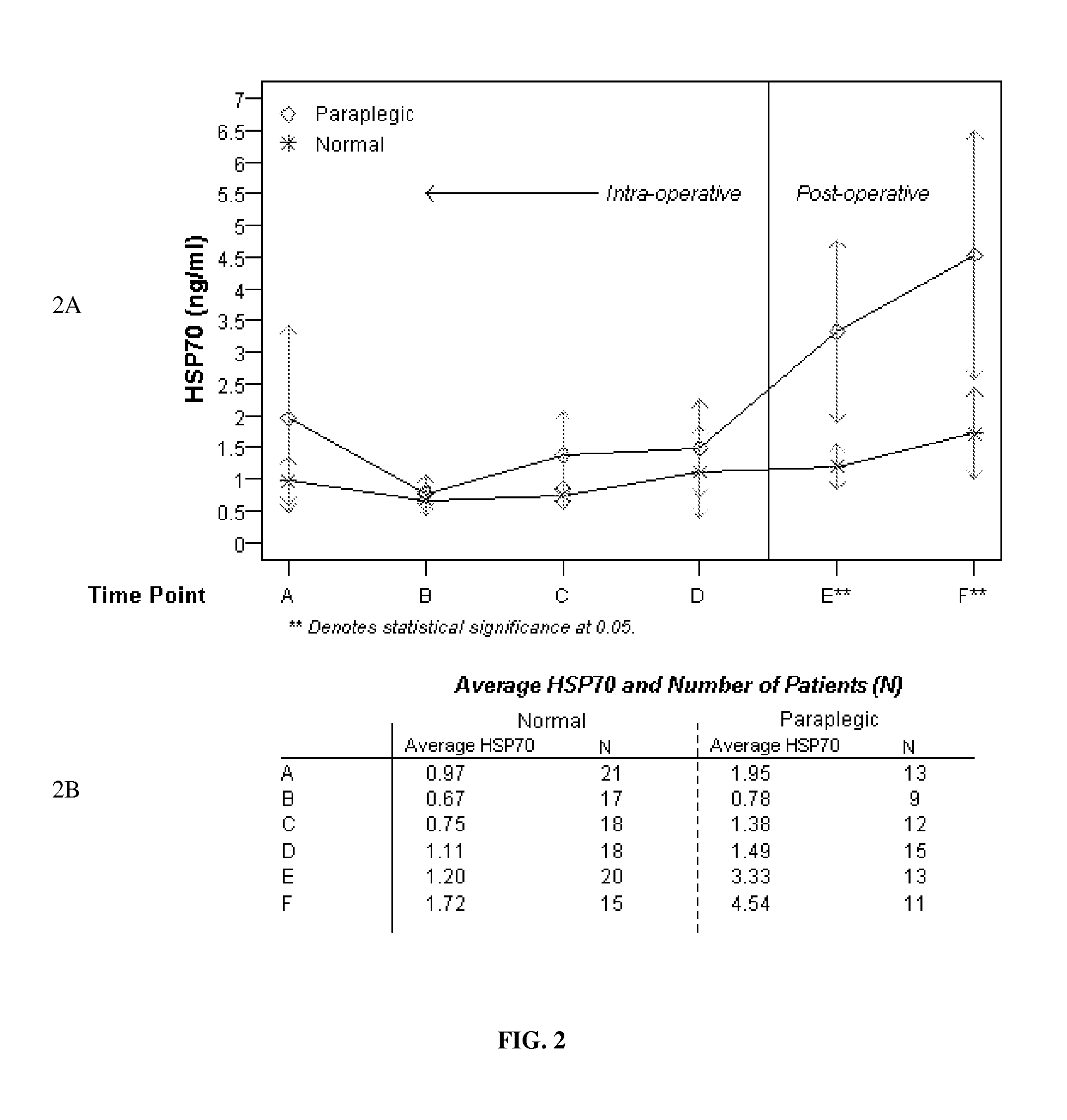Elevation of Induced Heat Shock Proteins in Patient's Cerebral Spinal Fluid: A Biomarker of Risk/Onset of Ischemia and/or Paralysis in Aortic Surgery
a technology of induced heat shock protein and patient's cerebral spinal fluid, which is applied in the direction of peptide sources, instruments, peptides, etc., can solve the problems of thoracic aorta aneurysm repair carries a relatively high rate of perioperative morbidity, spinal cord ischemia with neurological deficit is a devastating complication, and the risk of spinal cord ischemia is relatively high, so as to delay the post-operative permanent patient para paralysis
- Summary
- Abstract
- Description
- Claims
- Application Information
AI Technical Summary
Benefits of technology
Problems solved by technology
Method used
Image
Examples
example 1
[0157]Demographic, preoperative, and surgical statistics for the study population (37 patients) are shown in Table 1. Patients ranged in age from 40 to 80, with 20 men and 17 women. None of the demographic variables of age, race, and sex was significantly associated with the paralysis outcome. However, patient smoking history was found to have a statistically significant effect on the paralysis outcome of the patients. Patients who developed postoperative paraplegia reported a median of 60 (inter-quartile range, 50 to 75) pack years, compared with only 7 (inter-quartile range, 0 to 45) pack years among patients who did not develop paraplegia (p=0.0011). There were significantly more patients with chronic renal insuffiency (CRI) in the paralysis outcome group (40%, standard error=26%) than in the normal outcome group (4.6%, standard error=4.7%).
[0158]Regarding Surgical Statistics (see Table 1), significantly fewer patients in the postoperative paralysis outcome group than in the norm...
PUM
| Property | Measurement | Unit |
|---|---|---|
| pressure | aaaaa | aaaaa |
| concentration | aaaaa | aaaaa |
| perfusion pressure | aaaaa | aaaaa |
Abstract
Description
Claims
Application Information
 Login to View More
Login to View More - R&D
- Intellectual Property
- Life Sciences
- Materials
- Tech Scout
- Unparalleled Data Quality
- Higher Quality Content
- 60% Fewer Hallucinations
Browse by: Latest US Patents, China's latest patents, Technical Efficacy Thesaurus, Application Domain, Technology Topic, Popular Technical Reports.
© 2025 PatSnap. All rights reserved.Legal|Privacy policy|Modern Slavery Act Transparency Statement|Sitemap|About US| Contact US: help@patsnap.com



